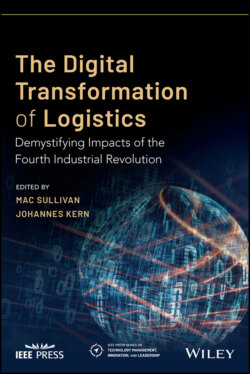Читать книгу The Digital Transformation of Logistics - Группа авторов - Страница 65
AM Supply Chain
ОглавлениеIn a conventional supply chain, suppliers from various places distributed all over the world deliver certain raw materials and components to a manufacturer that is often located in a low‐cost location. This manufacturer then produces goods in large quantities, benefiting from “economies of scale,” and ships them to a central hub like an airport or port. The goods will be transported by carriers with transit times ranging from one week (airplane) up to over a month (ocean carrier) and ultimately arriving at a wholesaler. From there, the parts are distributed to various retailers until they ultimately arrive at the final customer. Such a conventional supply chain is shown in Figure 4.1.
In contrast to a conventional supply chain, an AM supply chain is much more concise (Mills and Camek 2004). Suppliers only have to deliver basic materials instead of specific components, which allow the manufacturer to already store the right materials before any customer order occurs. Considering that only a few basic materials are required, the number of suppliers in the AM supply chain would be drastically reduced. This would allow for a stronger focus on few collaboration partners that deliver high‐quality materials and the most suitable software program (Kothman and Faber 2016; Chekurov et al. 2018). The actual production process could then happen at a decentralized location close to the customer, such as at an AM manufacturer, a wholesaler, or even a retailer. This would change the conventional flow of goods, reducing upstream transportation to basic materials and downstream transportation to locally produced finished goods (Thiesse et al. 2015; Ford and Despeisse 2016). As advanced AM machines might be able to manufacture a wide range of products, physical inventory holding could be replaced by “digital inventory” holding in the form of digital CAD2 models. This would result in less stock, less material handling, and less packaging (Ruffo et al. 2007).
Figure 4.1 Conventional supply chain.
Figure 4.2 Additive manufacturing supply chain.
Distributed manufacturing can occur close to customers, disregarding that they might be situated in locations that are hard to reach or where transportation is difficult, e.g. due to political risks. Some scholars even argue that customers themselves could have AM machines at home, cutting out all middlemen of a conventional supply chain. In such personalized manufacturing setup, production and consumption would occur at the same place (Rayna and Striukova 2016). In this supply chain, “economies of one” benefits would allow a decentralized production of custom‐made products or spare parts. However, such production setup with numerous locations close to customers might also result in underutilized AM machines. Research suggests that to overcome the risk of such inefficiencies, machine sharing could be used, and new AM service providers emerge (Chekurov et al. 2018).3 Figure 4.2 shows the AM supply chain. While this supply chain appears to be more straightforward and beneficial, it also has a variety of disadvantages that will be discussed in the next section.
